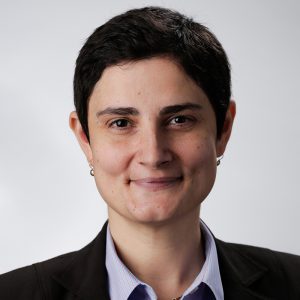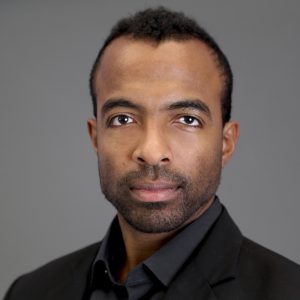Conference Recap: A Diversity of Voices
A core component of the Kenan Institute’s mission is bringing the insights gleaned from academic research into the broader public sphere. The Conference on Market-Based Solutions for Reducing Wealth Inequality, held June 1-2 in Chapel Hill, N.C., exemplified the institute’s status as a bridge between these two worlds, as academic presentations were supplemented with business, community and nonprofit perspectives, largely from the neighboring city of Durham, N.C. For this nonacademic component, conference participants were brought out of the classroom and into the community for a walking tour and on-site presentations. Our first recap of the conference (which can be viewed here) covered the academic sections; for our second recap, we move to a discussion of the on-the-ground issues highlighted at the conference.
Durham: A Case Study in Inequality
As discussed in a luncheon presentation from Mark Little, executive director of the institute-affiliated center NCGrowth, Durham offers a particularly appropriate case study for examining inequality. The city’s early growth was notably powered by the tobacco industry; the American Tobacco Co. was established in Durham by James B. Duke in 1890 and would come to control 80% of the domestic tobacco industry roughly a decade and a half later. However, less-publicized contributors to the city’s quick economic rise were the network and institutions of Durham’s Black Wall Street and Hayti community, the latter of which was formally established in 1866 as a hub for African Americans. Institutions such as the North Carolina Mutual Life Insurance Co. and the Mechanics and Farmers Bank provided a thriving entrepreneurial ecosystem for the region’s African American community, even during an era of national disenfranchisement and segregation.
However, Durham’s growth would also generate dynamics that would worsen inequality and undermine its status as a lodestar of economic empowerment. As smoking rates declined over the course of the 20th century, Durham similarly saw its tobacco-generated revenue begin to fade. Subsequent attempts at urban renewal took place in the 1960s; however, these developments involved large-scale efforts that would ultimately counteract the success of Black Wall Street. The most notable example may be the construction of the Durham Freeway (NC-147). This freeway, which was authorized in 1962, more thoroughly connected the city to the rest of the Research Triangle but was also built through the heart of the Hayti community, leading to displacement of many longstanding Black Wall Street businesses and residences.
These dynamics of simultaneous growth and displacement are still present in Durham today. In recent decades, the city has undergone significant urban revitalization and development, observing population growth of roughly 17% between 2010 and 2020 alone. While this growth has boosted the city’s profile and made it more attractive to young professionals, it has also led to increased housing prices and the displacement of historically disenfranchised communities that have been mainstays for Durham residents.
Perspectives from Nonprofits and Industry
The nonacademic portion of the conference’s agenda focused on issues and inequities facing the city of Durham, as well as the array of possible solutions envisioned by individuals working on those issues. At the Durham Arts Council, two voices from Durham’s nonprofit community discussed the unlikely paths that led to their current roles – as well as how business schools can facilitate more of its students entering socially driven careers. Keith Artin has served as the president and CEO of TROSA – a multifaceted treatment program that also offers vocational training, education and life mentoring – since 2020, while Vicky Garcia is the CEO of the Latino Community Credit Union, which offers financial products and services to its members throughout the state of North Carolina.
Both Artin and Garcia have MBAs (from Duke University and the University of North Carolina at Chapel Hill, respectively), and while they didn’t envision using the degree to enter the world of social entrepreneurship, they were ultimately drawn to the personal and social fulfillment such roles provide. Given that many in the audience teach at business schools, the two speakers emphasized the ways in which these institutions can provide students with an array of options outside the traditional finance or business-oriented roles. Artin and Garcia encouraged the idea that business schools should push students to explore outside their fields of interest – even students who think they’re sure about the career route they want to take.
Finally, Artin and Garcia stressed the need for truly knowing and understanding the community one is researching or working with. For example, Garcia outlined how the credit union offers alternative forms of credit to its members, since many have lacked the opportunity to build credit in traditional ways. Without this knowledge of the community she is advocating for, the efforts of the credit union would be significantly less effective.
The day in Durham included an array of other voices that provided context to the research presented at the conference. Attendees were able to connect with leadership members from the Urban Ministries of Durham, whose mission entails providing food, shelter, clothing and supportive services to those in need. William V. Bell, former mayor of Durham, detailed his experience in working to provide inclusive economic growth for the city, as well as the role that anchor institutions such as universities play in facilitating this growth. Aya Shabu from Whistlestop Tours provided a walking tour of Durham’s Black Wall Street and historic Parrish Street, giving an in-depth look at the institutions that powered Durham for much of the 20th century. And, in his keynote address, Michael Piwowar discussed his work as the executive vice president of finance at the Milken Institute, focusing on building a space in which social scientists can use their skills to address timely issues facing everyday Americans.
The next day, following another round of paper presentation, the conference concluded with a session on community wealth building moderated by Kenan Institute Executive Director Greg Brown. Three panelists, each of whom work to make a more inclusive economy, discussed the primary obstacles they observe to community empowerment. LaChaun Banks, director of equity and inclusion at Bloomberg Harvard’s City Leadership Institute; Colleen Briggs, head of inclusive banking at JPMorgan Chase; and Donna Carrington, executive director of the nonprofit Community Empowerment Fund, all emphasized that communities in need often lack adequate channels to express their needs and their ideas for solutions. Each panelist argued that these communities are often acutely aware of the resources they lack and how to solve issues they face yet are routinely excluded from conversations on these topics. In response to questions from the largely academic audience, the panel also collectively pointed to two areas in which research can play a unique role. First, the disagreement over definitions and metrics often causes roadblocks and infighting, especially at the political level; academic research can play a role here by clearing up ambiguity around, for example, the most essential ESG metrics that need to be tracked. Second, academics can also provide more granular and specific data that allows progress to be tracked over time.
Conclusion: Takeaways
The primary takeaways from the program of industry and nonprofit leaders underscored several ways in which academics – particularly those at business schools – can use their roles to achieve greater societal impact. First, they can engage with underserved or disenfranchised communities to better understand the most pressing issues these groups face, and also to make sure these perspectives and topics are represented in research agendas. Second, academics can use their data skills to address knowledge gaps or disagreements, offering hard evidence that can resolve these issues and create a more robust platform for further discussion. Finally, academics can look to their own surrounding areas to better understand the dynamics that result from policies and initiatives, as well as the unintended consequences that ensue. The overall goal of academic research is ultimately to improve society through increasing the scope of knowledge; by increasing engagement with the communities they study, academics can create a bridge between their research and the broader economic, political and social world we all inhabit.


